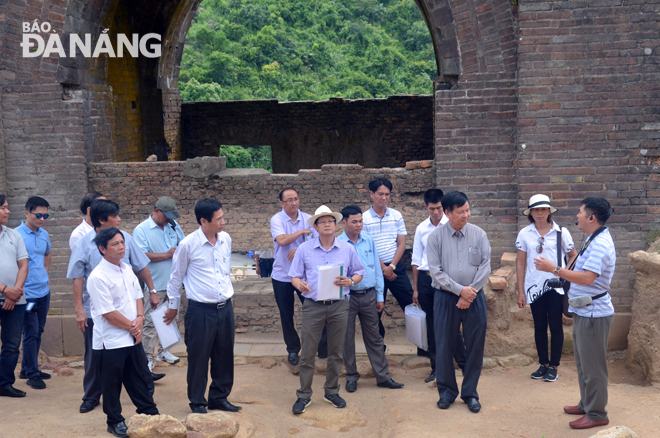New findings on Hai Van Gate announced
On Friday, archaeologists from the National Museum of Vietnamese History unveiled findings in the recent excavation on the Hai Van Gate.
 |
| Archaeologists from the National Museum of Vietnamese History unveiling new findings in the recent excavation |
Since April, an excavation has begun on an area of around 900m2 on the Hai Van Gate which sits at the top of its namesake mountain pass located at the geographical boundary between Da Nang and Thua Thien-Hue Province.
As a result, the remains of architectural vestiges of the Nguyen Dynasty on the Gate have been unearthed. Included were stair steps, the entrance paths to the site, sections of the foundations of a warehouse, and working and living houses for proconsuls.
Also, stair steps, an entrance path on the southern side of the Hai Van Gate, and an entrance gate to the shelter for the enemy, were discovered.
During the excavation, many architectural works which were built during the 1946 -1975 period were found. During that period, the French and US soldiers constructed houses, blockhouses, bases, fortifications and gun pedestals when they stationed at the Gate.
However, the architectural style of these construction items were completely changed compared with their initial designs.
In particular, brick gate and stones walls of the Hai Van Gate were demolished, whilst the gun pedestals were destroyed to build blockhouses, working place and houses.
During the excavation, some valuable artifacts have been found such as pieces of bricks and tiles, fragments of pottery and ceramics, and stone items during the Nguyen Dynasty. There have also been some items made of iron, stainless steel and glass of French and US soldiers.
The newly-discovered artifacts will play an important role in providing more scientific information for refurbishing , preserving and revealing the aesthetic and historic value of the monument.
At the unveiling meeting, the researchers suggested that the Hai Van relic site should be restored and refurbished as a special military fortress on the basic of the Nguyen Dynasty’s design.
The focus should be on studying, preserving and embellishing the blockhouses and underground tunnels which are considered as valuable evidence of resistance wars.
Also, special attention should be paid to renovating space surrounding the monument, improving landscapes and building infrastructure in a bid to attract more tourists from both home and abroad to visit the site.